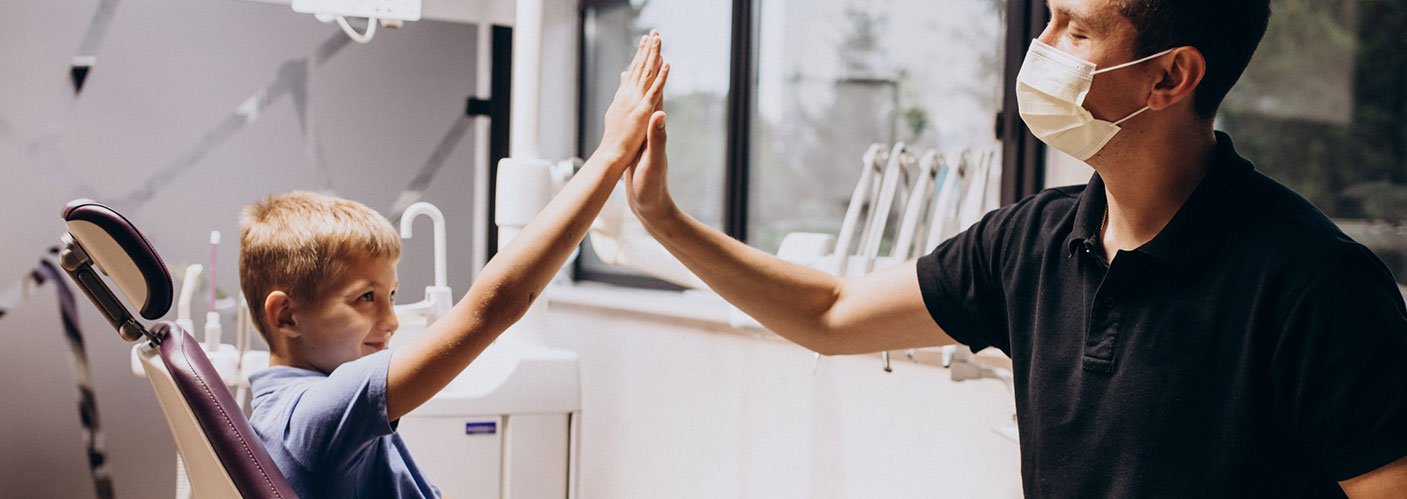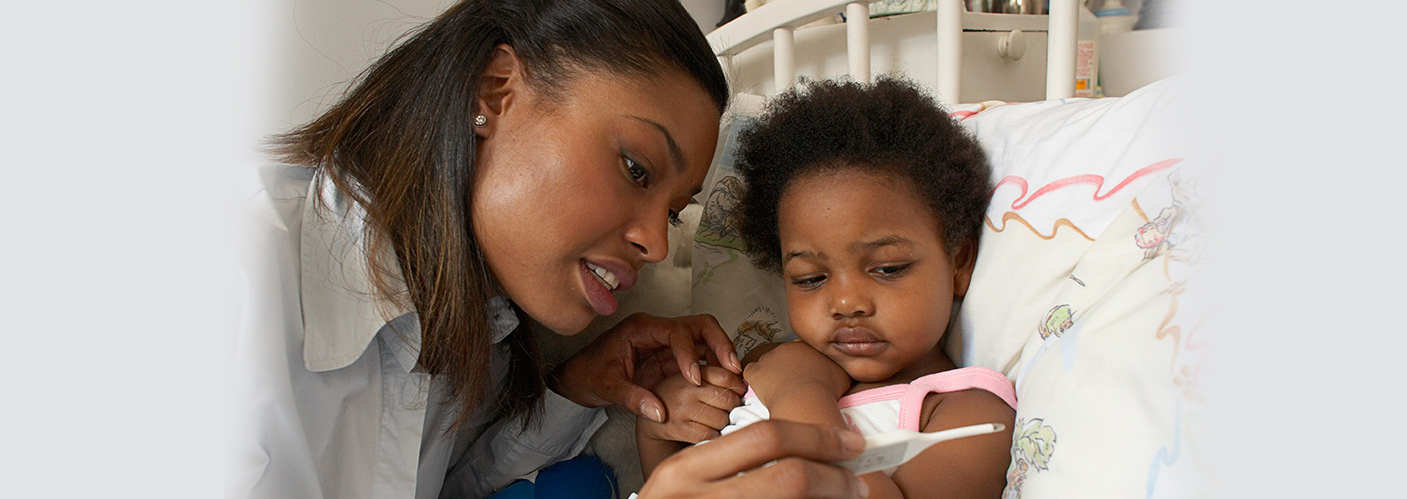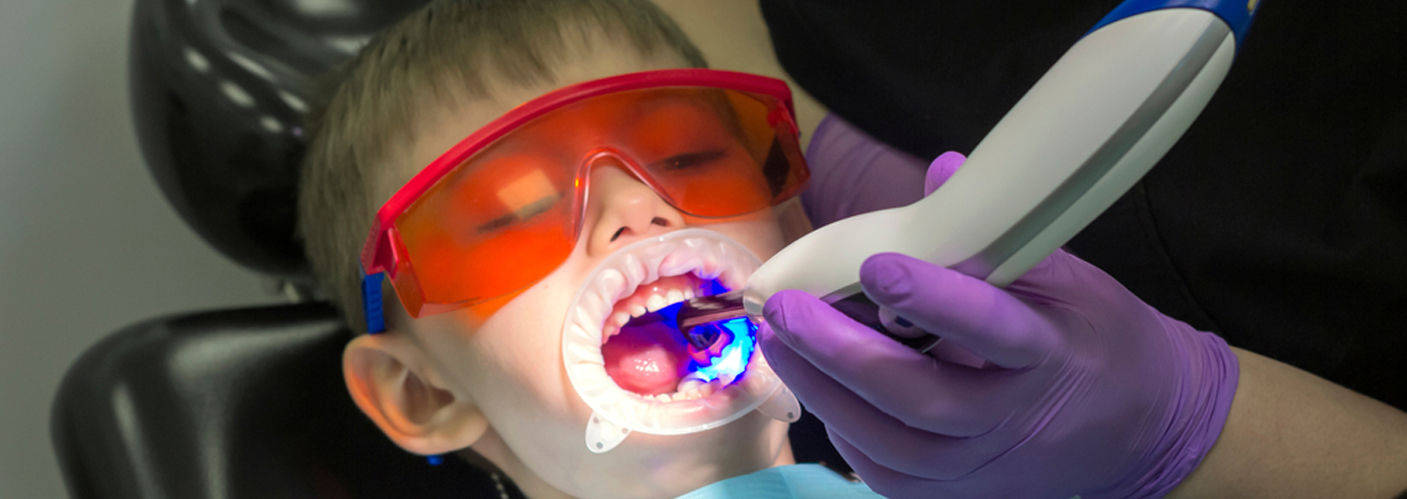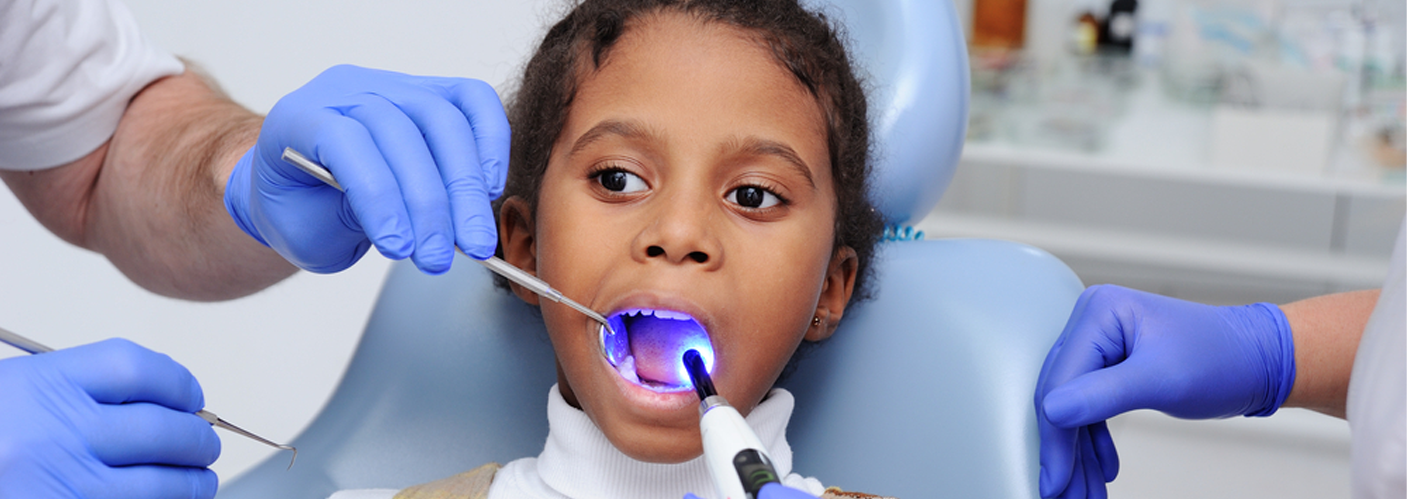Being the parent of a child with special needs means finding medical and dental care providers who will be patient, compassionate, and sensitive. Just as each child has a unique personality, each child will have different needs. Your child does not have to receive an official diagnosis of Autism, Down Syndrome, or other developmental disabilities to merit consideration. Many children have issues with anxiety and sensory input which can exist on their own or as part of the diagnosis of a specific condition.
If you have concerns about how your child will react to dental equipment or numbing, laser dentistry administered by a pediatric dentist may be the answer.
How Does it Work?
The word laser means “light amplification by the stimulated emission of radiation.” The instrument creates a very narrow, focused beam of light energy. When applied to dental tissue, it can remove it or shape it.
Dentists use hard tissue and soft tissue lasers. Hard tissue lasers can cut through tooth structures which may be necessary to repair or reshape a broken tooth or to repair fillings. Soft tissue lasers are used on gums and other soft tissues.
Some of the conditions that laser dentistry can treat are:
- Gum disease or gingivitis
- Tooth decay
- Hypersensitivity
- Tongue-tie
- Lip tie
Lasers are also used in teeth whitening processes.
Just as there are hard tissue and soft tissue lasers, there are also hard tissue and soft tissue procedures.
Hard Tissue Procedures
These procedures involve the teeth and include:
- Dealing tubules on the roots to treat tooth sensitivity
- Locating cavities
- Killing bacteria during tooth preparation for fillings or other treatments
Laser treatments can reduce or eliminate the need for drilling and anesthesia which will relieve some patients greatly, especially children and their parents.
Soft Tissue Procedures
Involving the gums and other tissues in the mouth, these procedures can entail:
- Fixing “gummy smile” which involves pushing back the gum line so that more of the teeth will show naturally
- Removing excess tissue folds that can interfere with dentures or other dental prosthetics
- Treating a condition called tongue frenulum attachment which occurs when the fold of skin that holds the tongue to the floor of the mouth is too thick and impedes a child’s ability to breastfeed or talk normally
Other Procedures
Lasers can also be used for these purposes:
- Removing tumors
- Viewing tooth and gum tissues
- Treating pain and inflammation in the jaw joint
- Reshaping throat tissue to help correct sleep apnea
- Treating cold sores
- Regenerating damaged blood vessels, scars, and nerves
In truth, dentistry technology has progressed far beyond anyone’s expectations.
How Can Laser Dentistry Benefit Your Child?
Laser dentistry offers advantages that traditional methods do not.
1. Anesthesia or numbing becomes unnecessary for some procedures because the laser itself does not cause pain.
2. Soft tissue lasers seal the tissues so there is less bleeding and a reduced need for sutures.
3. Lasers sterilize the area, greatly reducing the chance of a bacterial infection.
4. The lasers cause less damage, so wounds heal faster.
5. Lasers make a lot less noise than drills.
There are some instances when laser treatments cannot be used, such as when a tooth already has a certain type of filling, but those are less likely to affect a child than an adult.
Laser dentistry is more comfortable, more cost-effective, and more efficient than traditional methods. Your child might even enjoy a trip to the dentist to learn more about this fascinating technology.
Dental procedures are never simple and sometimes can be a scary experience for kids. If you would like to have more information about laser dentistry and dentistry for kids, we at Children’s Dentistry of Arlington are here to help you make the right decision for your family.







